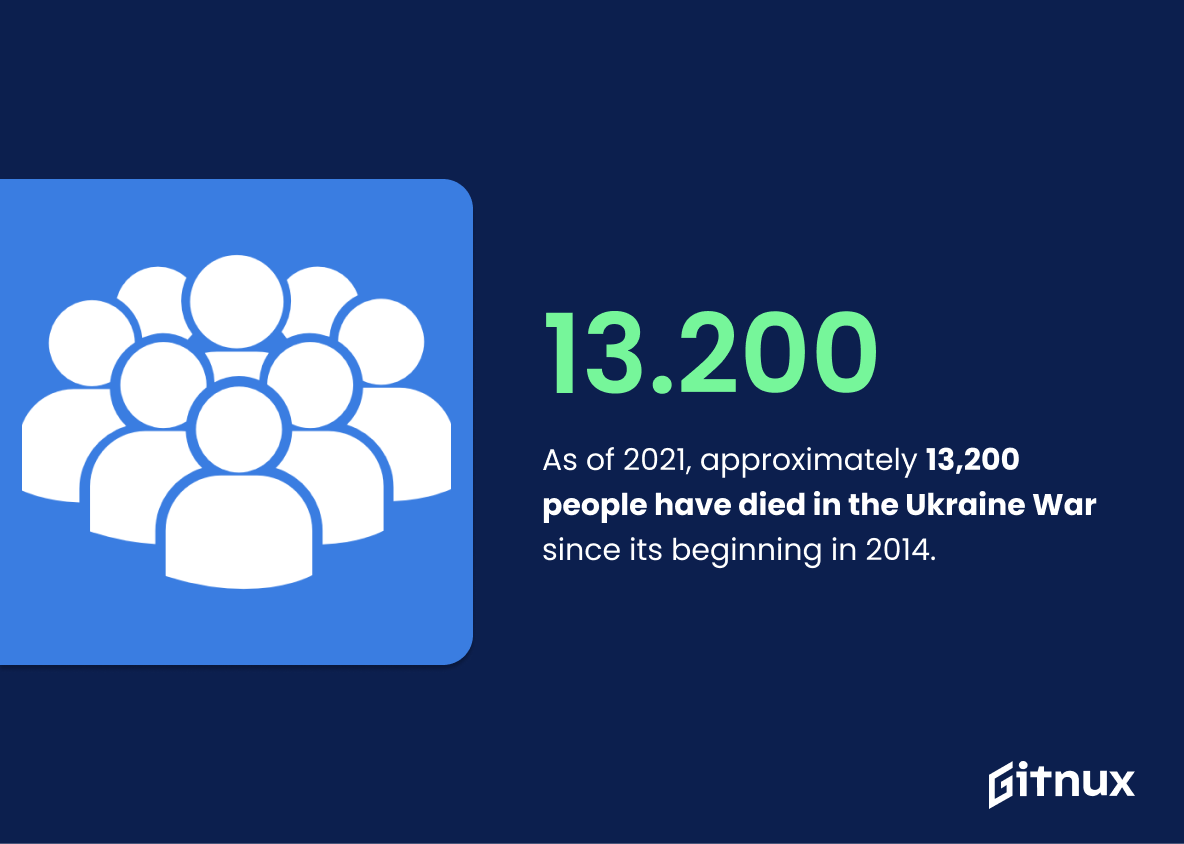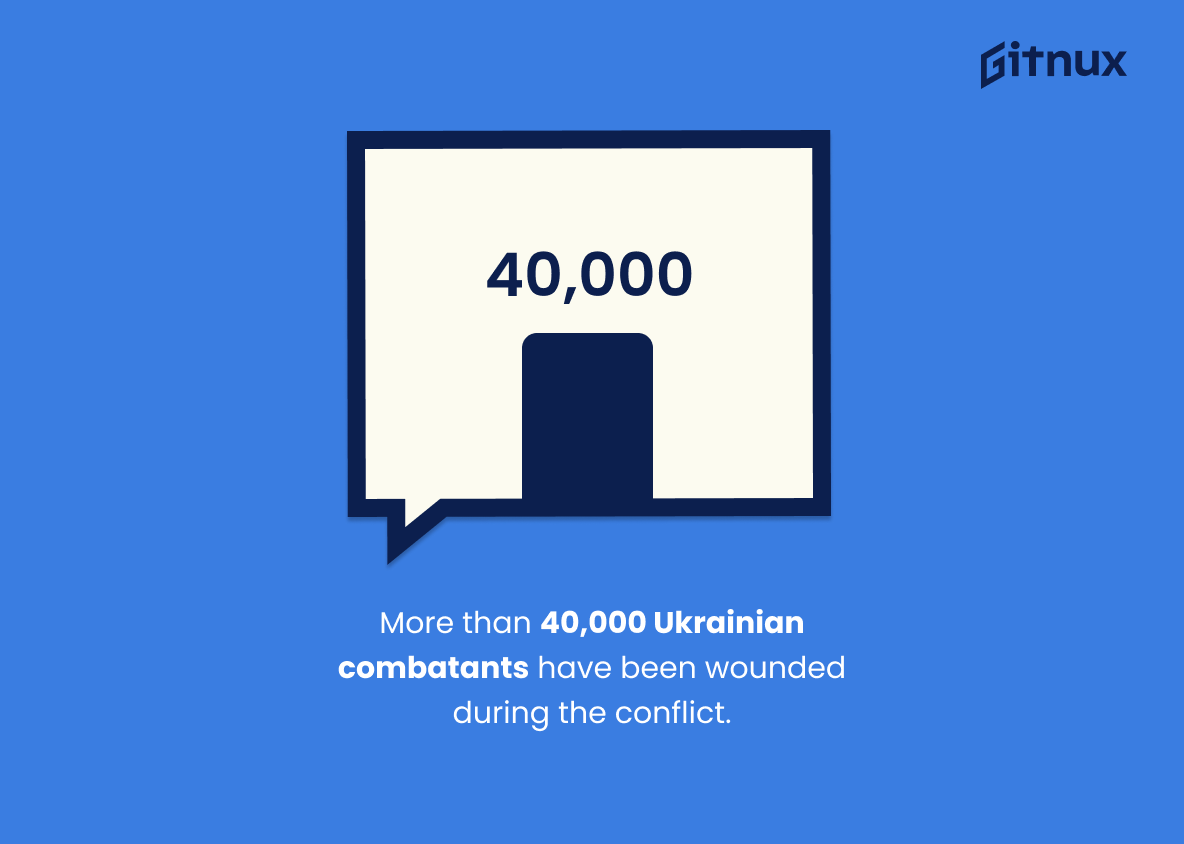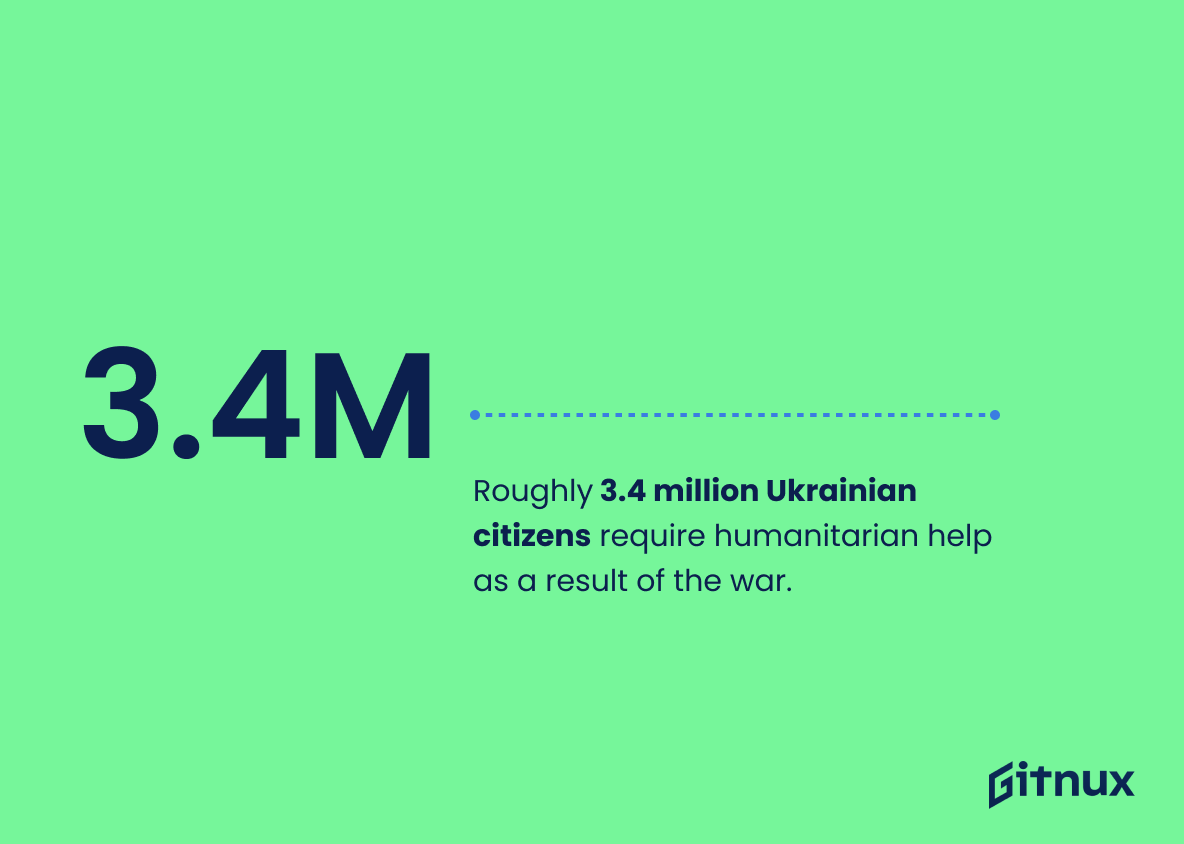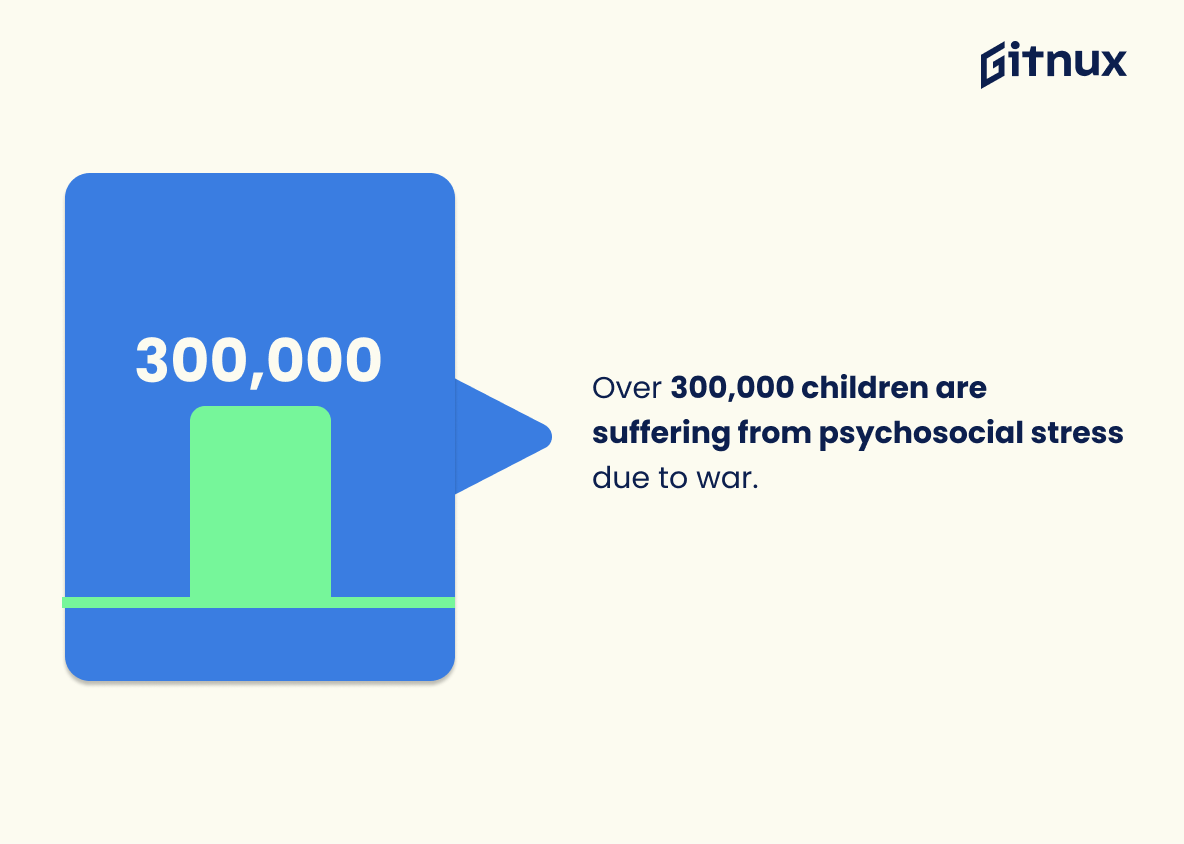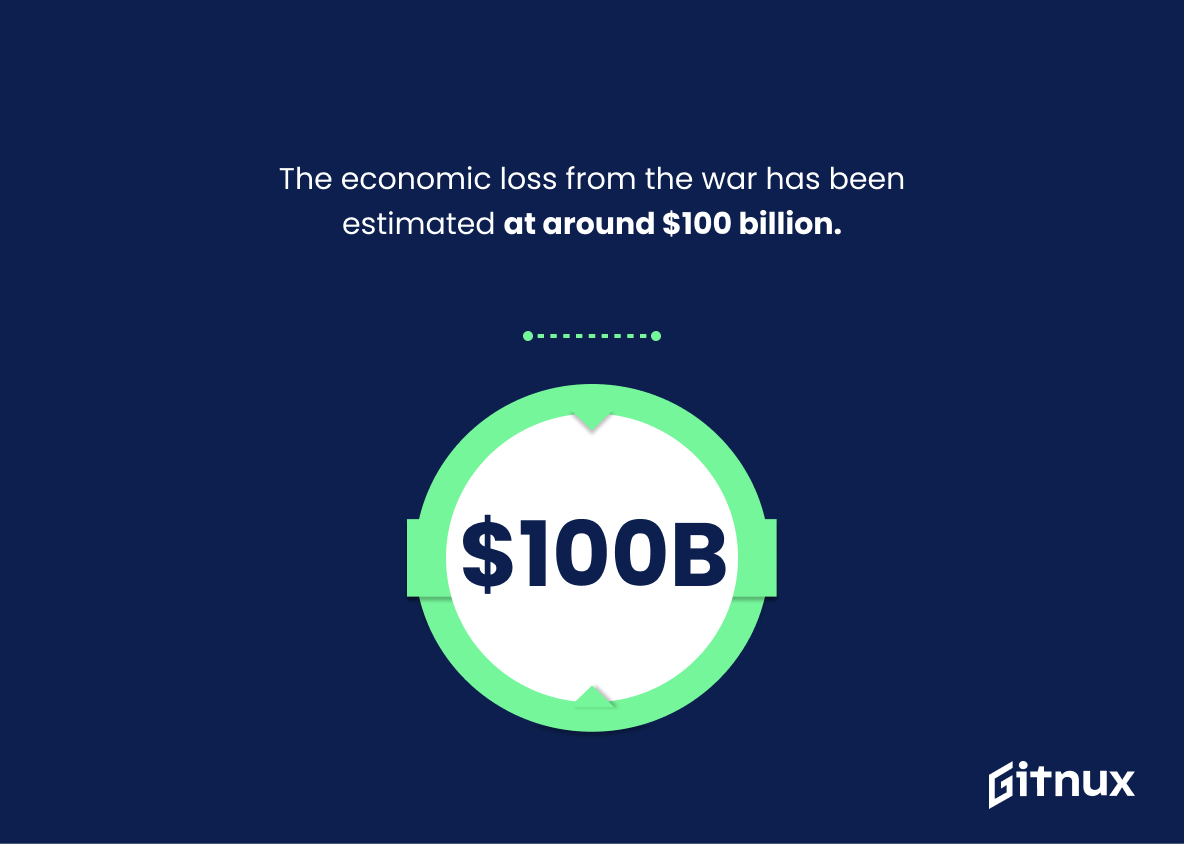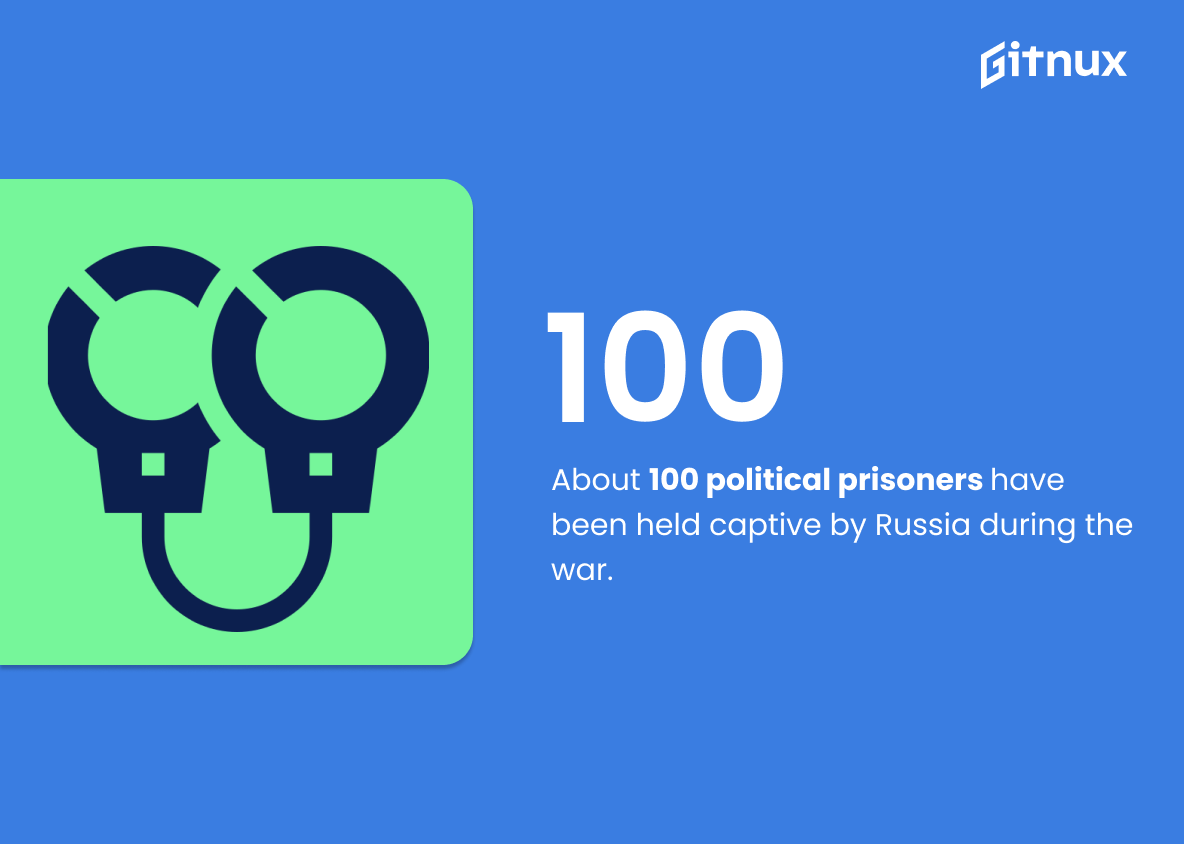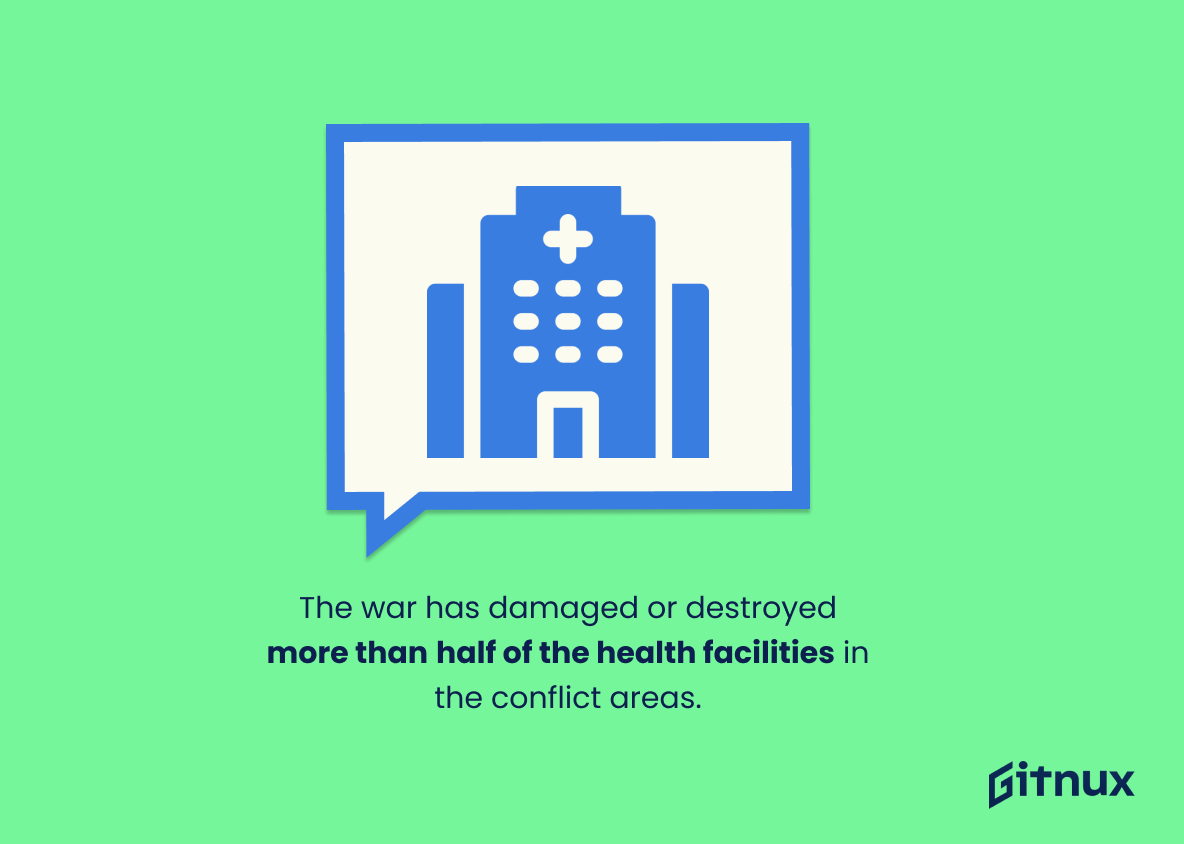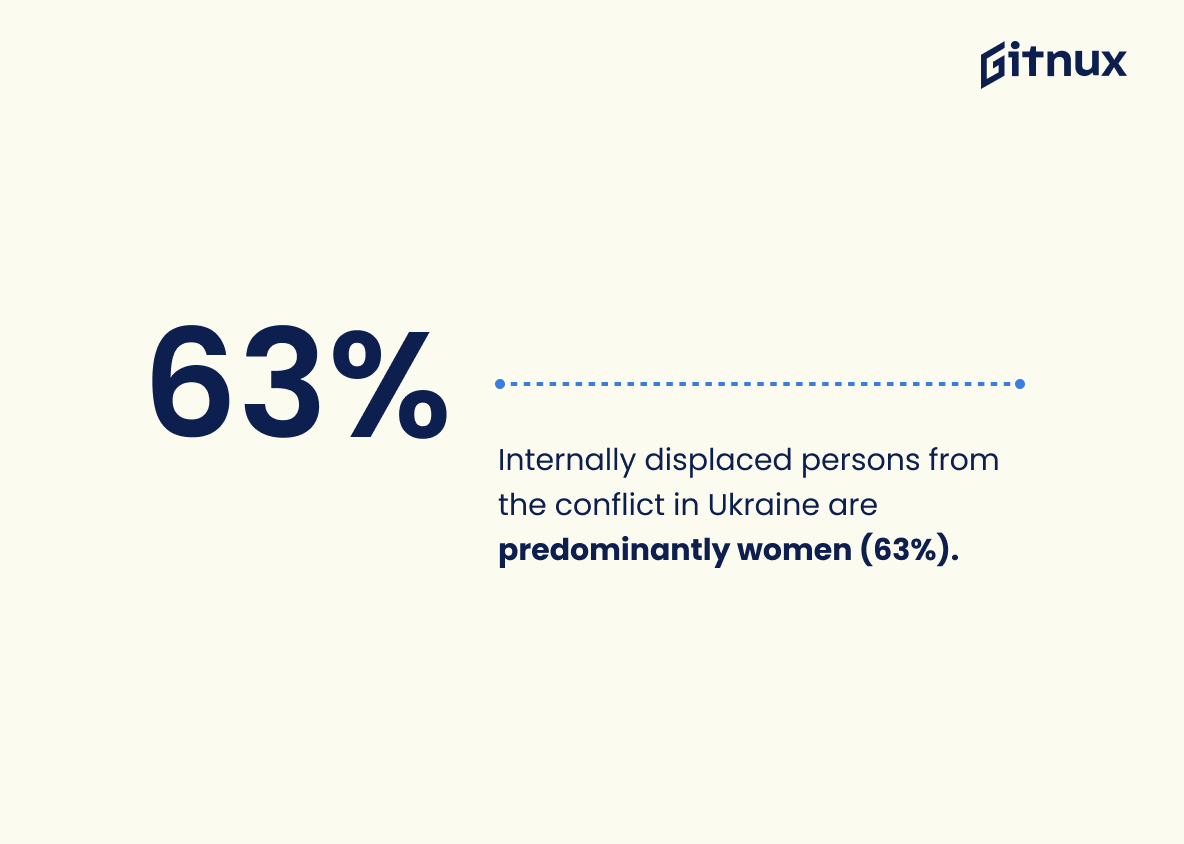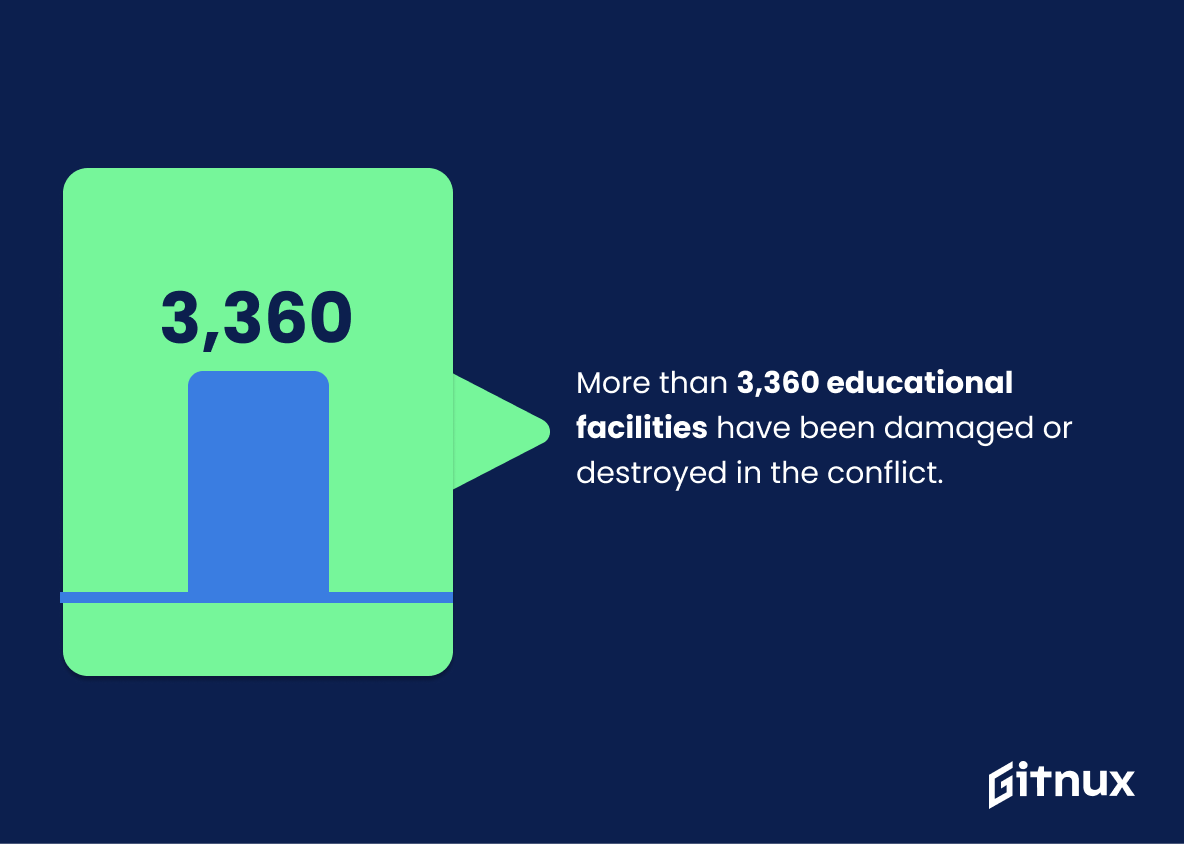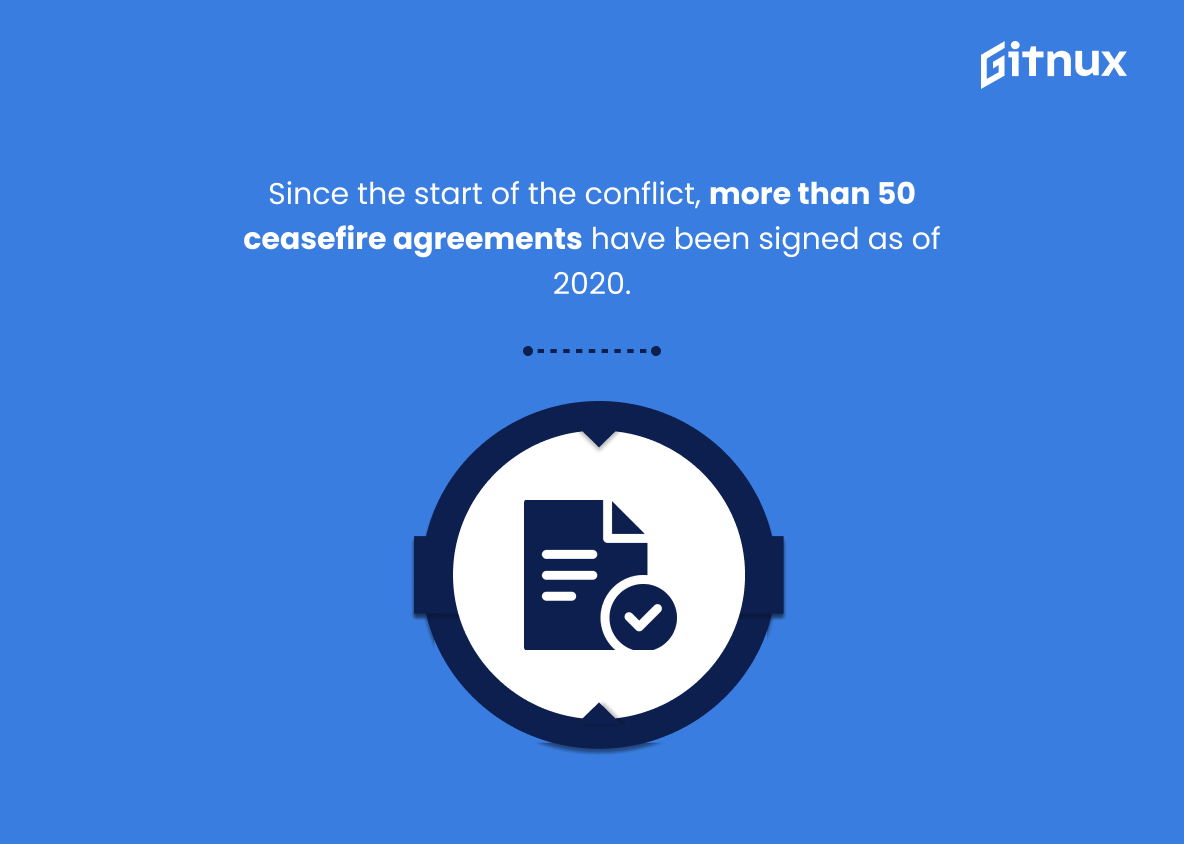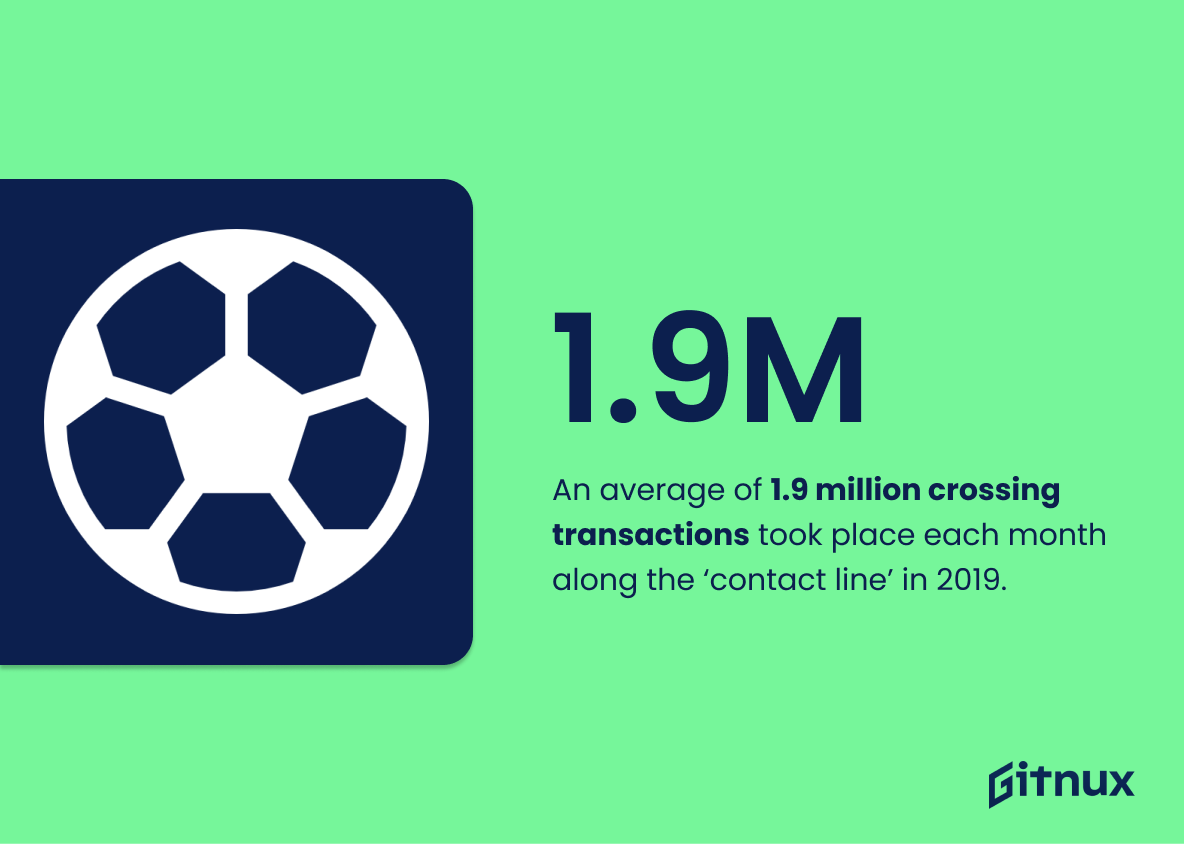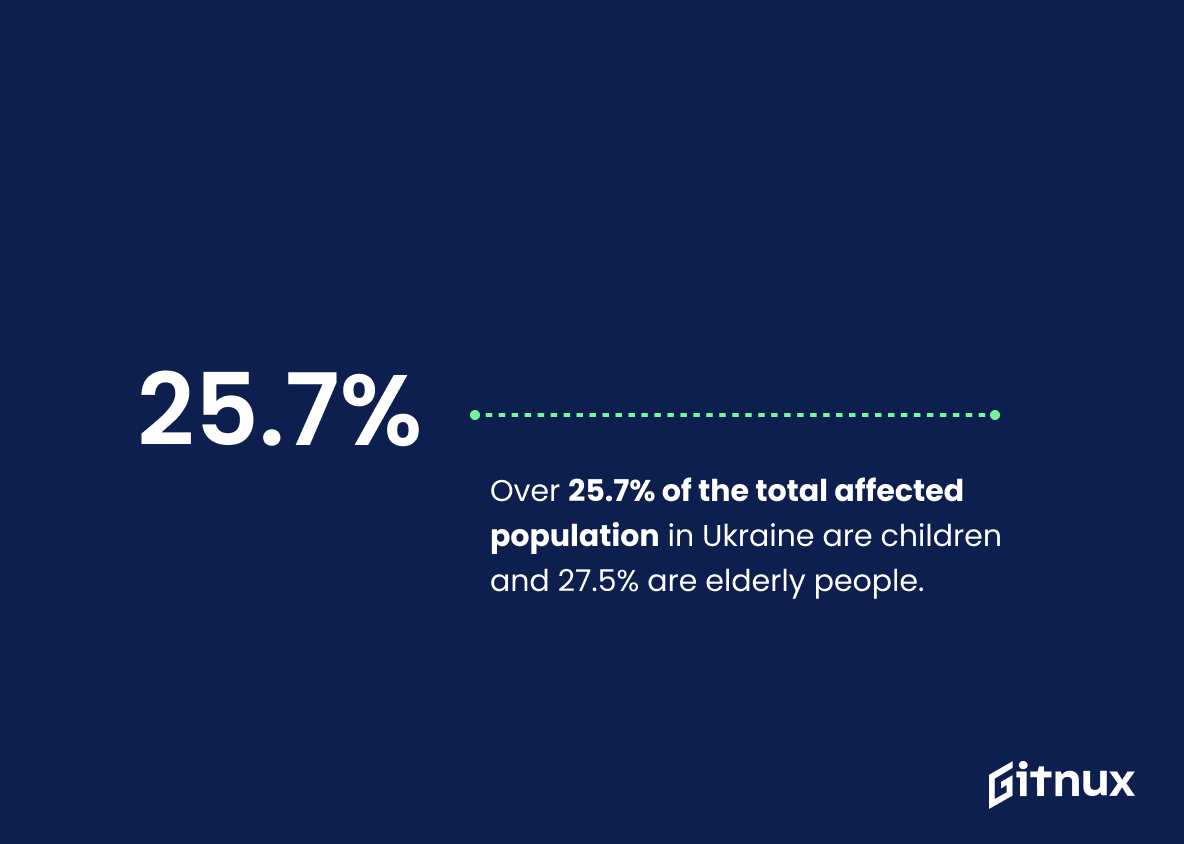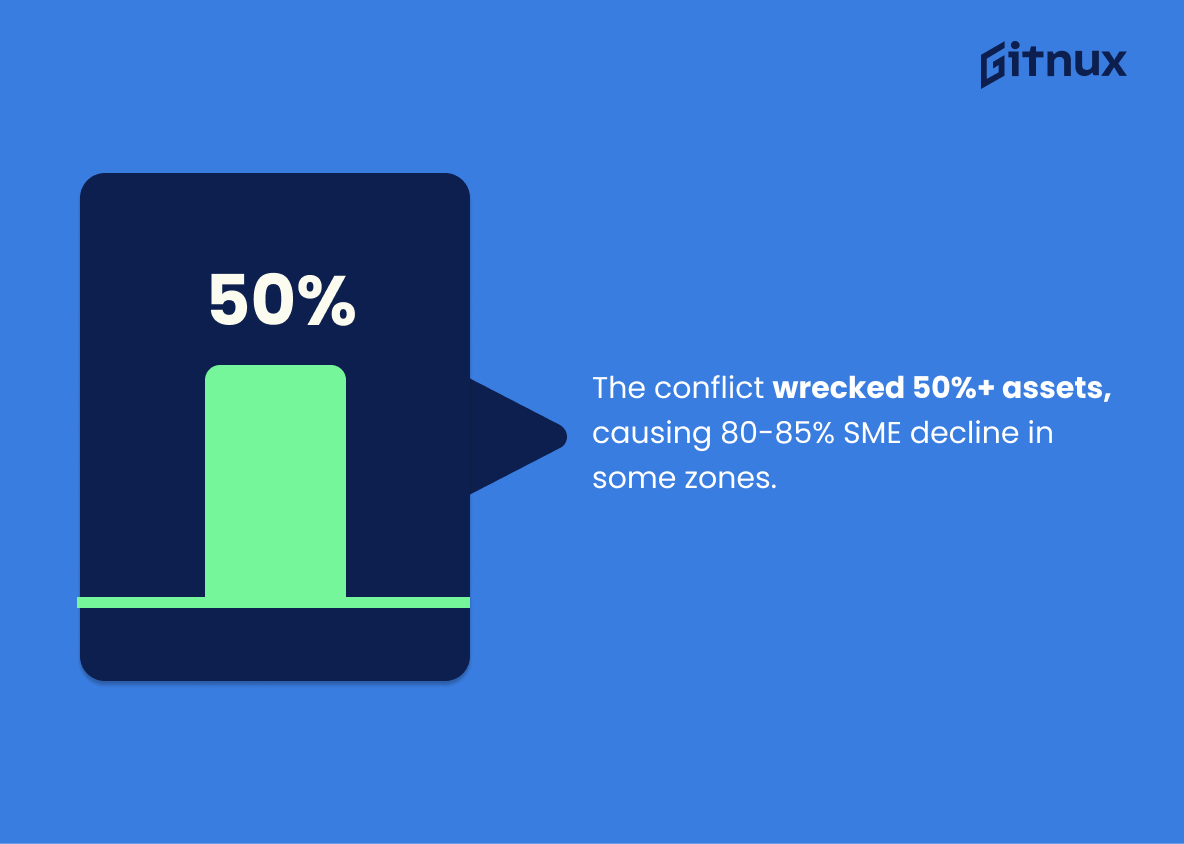A nation caught in the crossfire of geopolitical tension, Ukraine has been torn apart by conflict for several years now. This blog post aims to analyze and provide an in-depth understanding of the Ukraine War through a lens few consider – statistics. Going beyond individual narratives and political rhetoric, we harness the power of numbers to highlight one of the most harrowing conflicts of our time. Both powerful and untainted by bias, statistics provide a raw, poignant, and authentic account of the war’s impact. Join us as we delve into this complex cauldron of unrest, unseen devastations, and human resilience unraveled through the chilling prism of facts and figures.
The Latest Ukraine War Statistics Unveiled
As of 2021, approximately 13,200 people have died in the Ukraine War since its beginning in 2014.
Grasping the stark reality that close to 13,200 lives have been lost in the Ukraine War since 2014 presents a chilling canvas of the extent of human catastrophe. Each digit in this statistic represents not just a person, but a family, a story, and an untimely end that echoes the dire consequences of the conflict. A glance at this number paints a heart-wrenching narrative of war that words alone may fail to capture. To anyone attempting to comprehend the scope and impact of the Ukraine War, this chilling toll anchors the narrative firmly in the realm of hard, tragic fact. Presenting such statistics underpins the enormity of the situation, bringing a broader understanding of the true cost that extends beyond political or territorial gains and into the realm of human life.
More than 40,000 Ukrainian combatants have been wounded during the conflict.
The visualization of the number, ‘more than 40,000 Ukrainian combatants wounded’ during the conflict, creates a compelling narrative about the grim realties of the Ukraine War. Indeed, this figure tells stories of strength and resilience, yet concurrently highlights the high costs of war. Grappling with this statistic enables readers to measure the extent of human suffering, and go beyond mere rhetoric to acknowledge the prevalence of fear and loss. Ultimately, this statistic is a graphic testament of the war, embodying its wrath to the very people who are on the manifolds of the conflict, and standing as a stark reminder of why peace is imperative.
Roughly 3.4 million Ukrainian citizens require humanitarian help as a result of the war.
Highlighting this data casts a clear spotlight on the grim reality that the war in Ukraine does not merely imply territorial disputes and political disagreements. Instead, it underscores the profound human cost associated with it, clearly measured by the staggering 3.4 million people in desperate need of humanitarian assistance. This metric offers invaluable insight into the scale of the crisis and the desperate situation of Ukrainian citizens, making it an integral part of the narrative in any discourse surrounding the Ukrainian War Statistics.
Over 300,000 children are suffering from psychosocial stress due to war.
Highlighting the figure of over 300,000 children impacted by psychosocial stress in the crucible of war puts in sharp focus the devastating human impact of the Ukraine War. Numbers such as these are essential in giving a voice to the silent victims, particularly the youngest and most vulnerable, showcasing the unseen wounds war inflicts on mental health.
This fact underscores the urgency of intervention by illuminating the harsh reality of war’s long-lasting psychosocial implications. It is a sobering reminder that beyond the tangible devastation and casualty figures often associated with conflicts, there are profound, invisible traumas these young minds endure. Such figures guide readers in understanding the gravity and ongoing ripple effects of the conflict, shaping conversations about humanitarian assistance, long-term psychological supports, as well as the urgent need for peace processes.
The economic loss from the war has been estimated at around $100 billion.
The colossal figure of $100 billion in economic loss, tied to the Ukraine War, serves as a stark testament to the tangible aftershocks of conflict which echo far beyond the battlefield. This figure does not merely signify money – it implies a cascade of consequences including national debt, citizen impoverishment and infrastructural decay. Examining this staggering statistic opens a unique window into understanding the profound impact of the war on Ukraine’s economic stability and its long term struggle to restore financial equilibrium.
About 100 political prisoners have been held captive by Russia during the war.
Drilling down into the harsh realities of the Ukraine War, the statistic indicating that approximately 100 political prisoners are currently detained by Russia punctuates a significant subtext of the conflict. Beyond the raw numbers of military casualties and territorial losses, these captive individuals underscore the ideational battleground, where dissenting voices and political opposition become yet another front line.
This chilling number serves as a barometer, gauging the intensity of political oppression exercised during wartime, and adds a heartrending human element to the otherwise impersonal war statistics. It paints a vivider portrait of the war, a tableau not merely of bombed-out buildings and military moves, but of compelled silence, rebellious voices muted, and intellectual freedom shackled.
In addition, these numbers serve as a stark signifier of the non-conventional war tactics adopted, further escalating the dimensions of the conflict beyond its physical borders. This grip on political prisoners broadcasts a clear message about the relentless nature of power struggle during the war, a chilling reminder of the relentless rush for dominance.
So, in an analytical dissection of the Ukraine War, this specific count conveys a pivotal narrative – an unsettling testament to the violation of freedom and human rights within the confines of conflict, an essential, albeit grim, facet of the comprehensive war statistics.
The war has damaged or destroyed more than half of the health facilities in the conflict areas.
Shedding light on the atrocity of war, this statistic underscores the devastation wrought upon the very life-saving infrastructure in the conflict-ridden regions of Ukraine. Noteworthy is the fact that over half the health facilities lay in ruins, a grim testament to the severity of the situation. This data isn’t merely ink on paper; rather, it paints an alarming portrait of a frayed healthcare system struggling to serve its purpose of serving the wounded and ailing.
Each shattered medical facility narrates a heart-wrenching tale of lives that could have been saved, of healings that never transpired, and of hope, slighted by the onslaught of war. Moreover, this statistic not only informs, but it also perpetuates a dialogue on the human cost of conflict – an aspect often overshadowed by political discourse. Thus, in the context of the Ukraine War Statistics blog post, it proves to be a haunting revelation of the war’s toll on health infrastructure, evoking a deep understanding of the broad-scale implications of such crisis on public health and wellbeing.
Internally displaced persons from the conflict in Ukraine are predominantly women (63%).
Gaining a full understanding of the human toll of the Ukraine conflict demands more than a broad-strokes account of displaced persons—it requires diving deeper into the demographic breakdown of those affected. A compelling figure emerges: 63% of internally displaced persons are women. This pivotal statistic illustrates a skewed burden borne by the female population, adding another layer of complexity to our perception of the conflict. With women making up the majority of those displaced, the war’s consequences, such as the interruption of education, job loss, or family separation, are seemingly falling heavier on Ukrainian women. It heightens the challenge in humanitarian planning and emphasizes the need for gender-specific approaches in conflict resolution and post-conflict reconstruction efforts.
More than 3,360 educational facilities have been damaged or destroyed in the conflict.
Drawing attention to the staggering figure of over 3,360 educational facilities damaged or destroyed during the conflict takes us to the heart of the multi-dimensional impact of the Ukraine War. It waves a red flag about the crippling effects of the war on education, a key building block of society. Not only does this chronicle the immediate physical destruction wrought by the conflict, but it also underscores the long-term societal implications. It’s like peering into a crystal ball of a potentially bleak future where a generation of learners are derailed from their educational path. This figure also reflects the war’s troubling potential to deepen educational inequities and fuel a cycle of poverty and disadvantage. Thus, from the perspective of social repercussions, the ripple effects of this statistic are far-reaching, painting a more complete picture of the Ukraine War experience.
Since the start of the conflict, more than 50 ceasefire agreements have been signed as of 2020.
The statistic you’ve quoted, highlighting the signing of over 50 ceasefire agreements since the conflict’s inception till 2020, is a powerful beacon illuminating the tumultuous journey undergone during the Ukraine War. It serves as a mirror to reflect the relentless attempts at establishing peace amidst violent turmoil. Furthermore, it underlines the fact that generating lasting peace is not simply about signing agreements; effective implementation is crucial. It provides a means for readers to gain a deeper understanding, giving context to the complexity of the situation and the cyclical pattern of conflict and temporary resolution that has played out over the years. This numeric revelation also subtly proposes the discouraging reality of temporary and ineffective ceasefires while urging the need for more steadfast and sustainable solutions.
An average of 1.9 million crossing transactions took place each month along the ‘contact line’ in 2019.
The need to understand the magnitude and implications of the Ukraine War cannot be overstated. With the provided statistic, it’s as if one were peeling back the curtain to reveal a more tangible aspect of the conflict – an average of 1.9 million crossing transactions each month over the ‘contact line’ in 2019. Such a figure underscores the enormity of movement across borderlines. It paints a picture of countless stories stitched together by each cross, highlighting the unrelenting rhythm of life amidst turmoil. Not only does it reflect the intense people-to-people exchange but it also spills the beans on the economic implications via those transactions, hence adding an economic dimension to the military conflict. Therefore, it’s a piece of mosaic that helps to complete the broader image of the war’s effects on Ukraine’s social and economic fabric. It’s not merely a number, it’s a resounding node in the web of complexities brought about by the war.
Since the start of hostilities, there have been 251 civilian casualties in 2020 alone: 58 fatalities and 123 injuries.
Delving beneath the numbers paints a vivid, disquieting picture of the sheer human cost of the Ukraine conflict in 2020. The staggering figure of 251 civilian casualties, including 58 fatalities and 123 injuries, uncovers a narrative of widespread suffering and loss. It tells a silent tale of how every bullet fired, every missile launched, didn’t just hit bricks and mortar, but lives, dreams, and futures. This statistic stands as a stark testament to the dramatic impact of war on the non-combatants, underscoring how violence spreads its tentacles in every nook and corner of the conflict zone. The scale of these figures underscores the urgency for peace negotiations and humanitarian efforts by bringing into focus the intimate impact of what can otherwise seem a remote or impersonal conflict.
Over 25.7% of the total affected population in Ukraine are children and 27.5% are elderly people.
By drawing our attention to the harrowing reality that over 25.7% of Ukraine’s war-affected populace are children, and another 27.5% are elderly, this statistic engenders a deep sense of concern and empathy. It is a starkly powerful reminder of the extreme vulnerability of these age cohorts who reap none of the war’s ill-conceived “benefits” yet are forced to bear the brunt of its most severe consequences. The lens of this data crystallizes the brutality of war, underscoring its indiscriminate nature while at the same time, making a compelling plea for peace and humanitarian aid. Similarly, this revelation also presents an opportunity for stakeholders to custom-tailor their response strategies to protect and assist these particularly susceptible groups during such times of crisis.
The conflict damaged or destroyed over 50% of productive assets resulting in an 80-85% decline of small and medium enterprises in certain areas.
Soaring beyond the realm of abstract numbers, this statistic presents a harsh portrait of real-life reverberations. The catastrophic impact is distinctly painted with every lost business and fractured livelihood in Ukraine. Consider this – over half of productive assets, the lifeblood of an economy and the motor of growth, are shattered or eclipsed, leaving an impact crater that screams a staggering 80-85% drop of small and medium enterprises in some areas. It provides a stark snapshot of the war’s economic aftermath, transforming cold data into the powerful tale of survival and resilience of the Ukrainian people. This chilling figure exposes the devastating domino effect the conflict has had, making it essential for comprehending the Ukraine War’s broader economic implications, the magnitude of the recovery challenge, and the sheer human cost beyond the battlefield.
Conclusion
The data and facts explored in this blog bring to light just how significant the effects of the Ukraine War have truly been. These statistics, pitting the sobering realities of loss, displacement, and economic impact against the backdrop of human resilience, paint a multi-faceted image of the conflict’s footprint. It’s crucial to not only be aware of this data, but also understand the narratives intertwined within these numbers – narratives of people, politics, culture, and history. While numbers can provide clarity, it’s empathy and sustained action that will ultimately guide Ukraine to a peaceful and prosperous future. It is our hope that this post prompts its readers to delve deeper into global conflicts such as the Ukraine War, understanding the profound implications beneath the figures.
References
0. – https://www.www.ohchr.org
1. – https://www.www.dw.com
2. – https://www.www.rferl.org
3. – https://www.www.unicef.org
4. – https://www.www.hrw.org
5. – https://www.www.undp.org
6. – https://www.reliefweb.int
7. – https://www.www.bbc.com
8. – https://www.displacement.iom.int
9. – https://www.en.interfax.com.ua
10. – https://www.defenceindepth.co
